Beginner’s Guide to Orienteering: Exploring the Basics of Adventure Navigation
Orienteering is a sport that combines navigation with running or walking, offering a dynamic way to explore the outdoors. As a beginner, you’ll learn to use a map and compass to navigate from point to point across different terrains.
This stimulating activity not only tests your physical endurance but also sharpens your decision-making and problem-solving skills as you select the best routes between checkpoints.
When starting with orienteering, it’s essential that you familiarize yourself with reading topographical maps and using a compass. These are the fundamental tools of the trade that will guide you through forests, over hills, and across streams. The objective is to visit a series of checkpoints marked on the map, deciding your own route to each and completing the course in the shortest possible time.
The beauty of orienteering lies in its accessibility to all skill levels and ages, making it a perfect hobby for those who love adventure and the great outdoors. As you progress, you’ll not only improve your navigational skills but also discover a rewarding way to keep fit, challenge your mind, and enjoy nature.
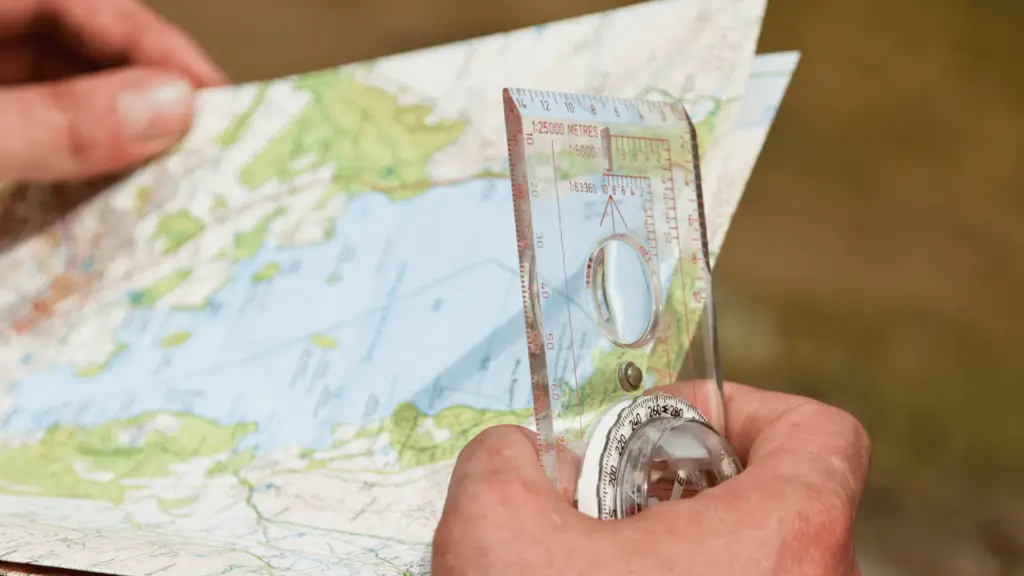
Understanding Orienteering Basics
Embarking on orienteering as a hobby immerses you in the art of navigation. Equipping yourself with the right know-how and gear propels your adventure from mere exploration to a thrilling sport.
What is Orienteering?
Orienteering is an adventurous sport where your goal is to navigate between a series of checkpoints marked on a unique orienteering map using only a map and a compass.
It combines running or walking with navigation and can take place in diverse environments, from wooded forests to urban areas. Your mission is to find the best route to each checkpoint in the fastest time possible, making swift decisions based on the terrain and features shown on your map.
History and Evolution
Originating in Sweden, orienteering began as military training in land navigation before it transformed into a competitive sport in Scandinavia.
The first public event was held in Norway in 1897, and from there, the sport grew in popularity, spreading across Europe and beyond. Today, orienteering has an international standard and is governed by the International Orienteering Federation, with diverse formats enjoyed by enthusiasts around the globe.
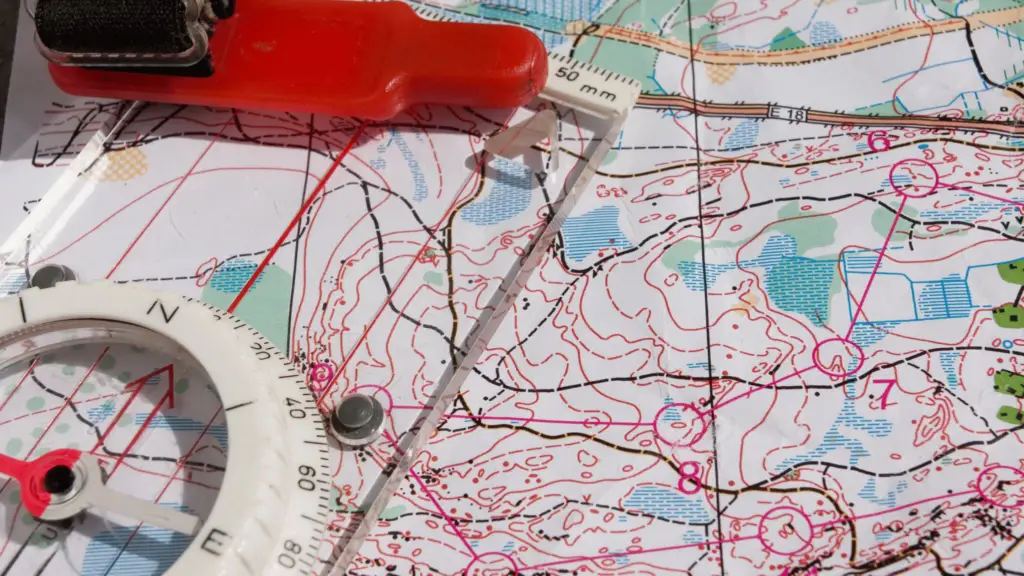
The Essential Equipment
To successfully participate in an orienteering event, you’ll need specific equipment:
Map: A detailed orienteering map is your primary tool, offering a representation of the terrain with symbols and colors that adhere to international standards.
Compass: Crucial for navigation, the compass works in tandem with your map to guide you through the course.
Clothing & Footwear: Wear comfortable clothing and sturdy footwear suitable for the environment and weather conditions.
Backpack: A lightweight backpack may be useful to carry essentials like water, snacks, and extra clothing.
Punching System: Events will either use an electronic e-punch or a traditional paper punch to record your visit to each checkpoint.
As you begin your orienteering journey, remember that mastering the use of your map and compass is essential. With practice, you’ll enhance your orienteering tactics and efficiency, elevating your outdoor adventure experience.
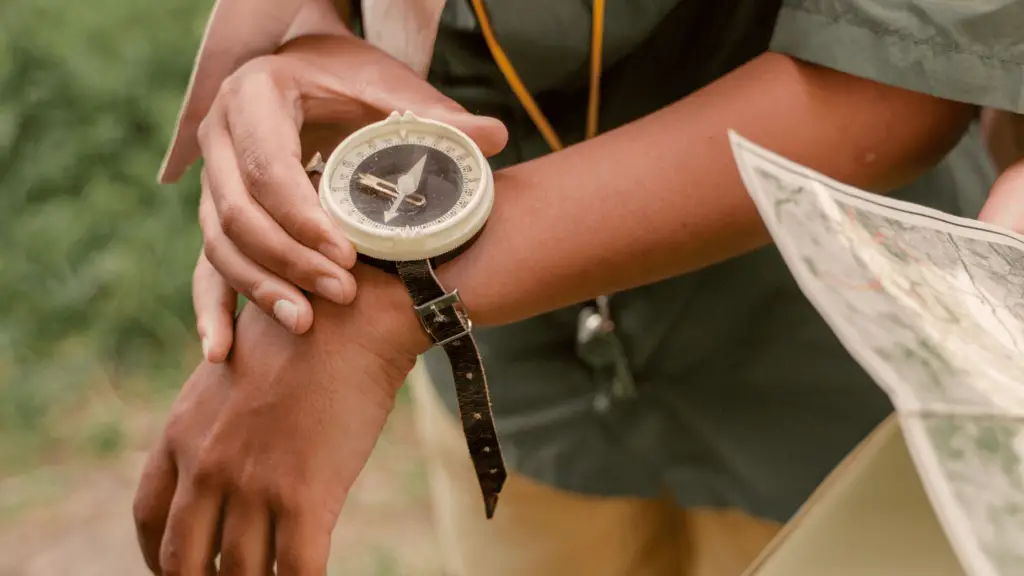
Orienteering Skills and Techniques
Orienteering is a dynamic sport that tests your ability to navigate through unfamiliar terrain using a map and compass. The key to success lies in mastering map reading and interpretation, handling the compass correctly, and developing sound navigation strategies.
Map Reading and Interpretation
When you embark on an orienteering adventure, your primary tool is the topographic map. It serves as a detailed guide to the terrain you will navigate, filled with symbols and contour lines that represent physical features. You must understand the scale of the map to determine distances accurately. Focus on identifying significant landmarks and features such as hills, rivers, and cliffs to gauge your location.
Using the Compass
An orienteering compass is more than just a tool for finding north. It helps you align your map with magnetic north and, by extension, true north, which is essential for accurate navigation. Be aware of the magnetic declination in your area, the angle difference between magnetic north and true north, and adjust your compass accordingly. When navigating, use the compass to set and follow bearings/azimuths in relation to your map.
Navigation Strategies
Effective navigation hinges on your ability to combine map reading with compass skills to move through the terrain efficiently. Start by planning your route, choosing paths that maximize easy travel and minimize energy expenditure.
Always be aware of your direction of travel and verify your distance covered by employing techniques like handrailing (following a linear feature) or catching features (aiming for significant features beyond your control point).
Types of Orienteering
Orienteering is a diverse sport with several specialized forms, each offering unique challenges and requiring specific gear. Your choice will depend on your interests, whether you prefer running through dense woods or cycling over rugged trails.
Foot Orienteering
In Foot Orienteering, you navigate on foot across varied terrains, from forests to urban settings. The courses demand mental sharpness and physical fitness as you run or walk to find controls marked on your map. Appropriate footwear is critical for safety as you move through varying ground conditions, be it muddy paths or rocky trails.
Trail Orienteering
Trail Orienteering makes the sport accessible to all, focusing on precision navigation rather than speed. It’s ideal for those who require a less physically demanding version, including individuals with disabilities. Here, safety and accuracy take precedence, as you follow specific trails and use detailed maps to locate controls without needing to venture off-path.
Ski Orienteering
In Ski Orienteering, you combine the endurance of cross-country skiing with navigation in snow-covered terrains, primarily during the winter season. You’ll need to choose routes that balance the fastest snow conditions and the shortest distance, navigating with a map while managing your safety on skis in cold weather.
Mountain Bike Orienteering
Mountain Bike Orienteering merges the high-speed world of mountain biking with the strategic challenge of map navigation. The courses are set on a variety of terrains, often involving rugged trails and requiring both cycling skills and quick decision-making. As you ride, ensuring your bike controls are well-maintained is as important as wearing a helmet for safety.
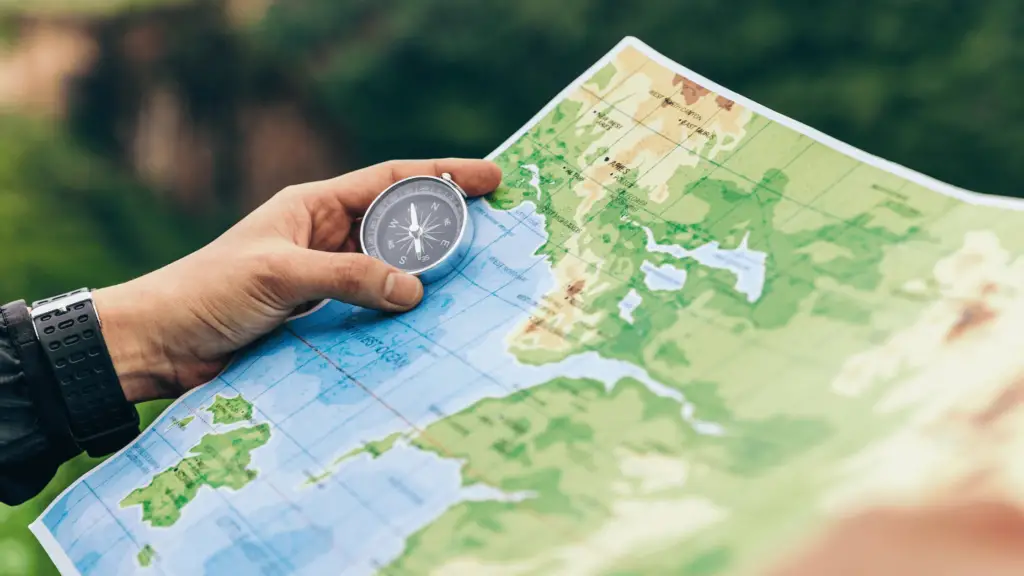
Getting Started with Orienteering
Orienteering is a sport where you use a map and compass to navigate from point to point in diverse and usually unfamiliar terrain. It combines navigation skills with running or walking, and it’s essential to understand the various courses available, how to prepare effectively, and where to find local clubs and events to get started.
Finding Local Clubs and Events
To dive into orienteering, your first step is to find a local club which can provide support and information on upcoming events. In the United States, local clubs like the Georgia Orienteering Club offer resources for beginners, including event schedules and registration details. Participation can give you a sense of community and guidance as you step into the orienteering world.
Choosing the Right Course
Orienteering courses are categorized by color codes that indicate their difficulty level. As a beginner, you should start with white or yellow courses which are simpler and have clear paths. Intermediate levels are marked as orange, and as you gain experience, you can progress to more challenging green, brown, blue, or red courses, which demand greater navigation skill and a faster pace.
Preparation and Training
Before attending your first event, it’s important to prepare yourself physically and mentally. Training should involve learning how to read an orienteering map where the scale represents the relationship between distance on the map and on the ground.
Understand how weather conditions can affect your pace and the landscape. Additionally, safety should be a priority, so be aware of how to handle potential hazards in various environments. Practising pace count and familiarizing yourself with different terrain types can enhance both your speed and navigation efficacy during a course.
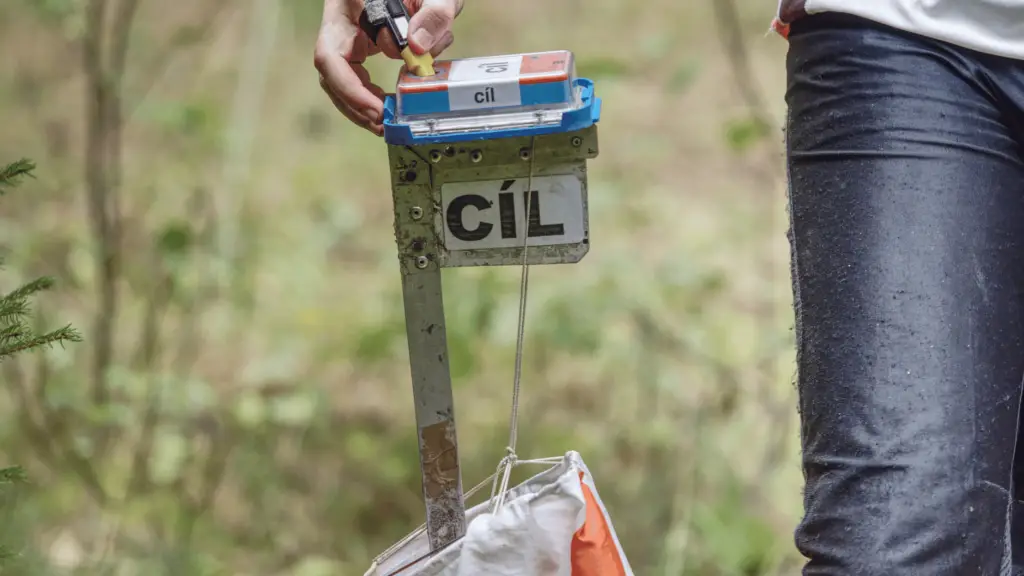
Participating in an Event
Orienteering events offer a dynamic combination of physical activity and mental exercise. Preparation and an understanding of the processes involved during and after the race are essential to ensure a smooth and enjoyable experience.
Before the Race
- Registration: Secure your spot at the event by completing the registration process well in advance. This will often include selecting your start time.
- Start Times: Start times are usually staggered to prevent crowding at checkpoints. Ensure you’re aware of your designated time.
- Clothing & Equipment: Dress appropriately for the terrain and weather conditions, and bring the necessary orienteering equipment such as a compass and map provided by the organizers.
- Safety: Familiarize yourself with the safety guidelines stipulated by the event organizers, including what to do in case of an emergency.
During the Race
- Time and Speed: Keep track of your time as events are typically timed, and your speed and pace can influence your overall ranking.
- Checkpoints and Controls: Efficiently navigate from point to point, using your map and compass to locate each checkpoint, also known as controls.
- Safety: Stay aware of your surroundings and follow the marked safety routes if you encounter any difficulties.
After the Race
- Time: After completing the course, your time will be recorded, and you’ll often have the opportunity to compare your performance with other participants.
- Safety: Check in to confirm you’ve finished the race, allowing organizers to ensure everyone’s safety and account for all participants.
Orienteering for Health and Fitness
Orienteering is more than a navigation challenge; it’s a holistic outdoor activity that enhances your health and fitness. Whether you’re running or walking, you’re constantly on the move, transforming the great outdoors into your personal gym.
- Cardiovascular Benefits: With a map in your hand and a route to navigate, you will cover a variety of terrains. This varied landscape is perfect for interval training, which can improve heart health.
- Muscle Strength: As you traverse different types of ground, climbing hills, and hurdling obstacles, you strengthen and tone your muscles, particularly in your legs and core.
- Mental Agility: Orienteering is as much a mental workout as a physical one. Plotting your course requires concentration and quick decision-making, keeping your brain engaged.
- Stress Reduction: Being in nature is known to reduce stress. Combine that with the adventure of orienteering, and you have a perfect recipe for mental well-being.
- Adaptive Intensity: Orienteering can be as competitive or recreational as you prefer. You set your pace, making it a suitable outdoor activity for various fitness levels.
Table: Health Benefits of Orienteering
| Benefit | Description |
|---|---|
| Cardio Benefit | Enhances heart rate and endurance |
| Muscular Strength | Builds leg and core muscles |
| Mental Fitness | Improves cognitive function |
| Emotional Well-being | Reduces stress, increases happiness |
| Flexibility | Tailor intensity to your fitness level |
By approaching orienteering as a hobby, you invest in a fun and rewarding way to stay active, challenge your mind, and enjoy the outdoors, boosting your overall health and fitness.
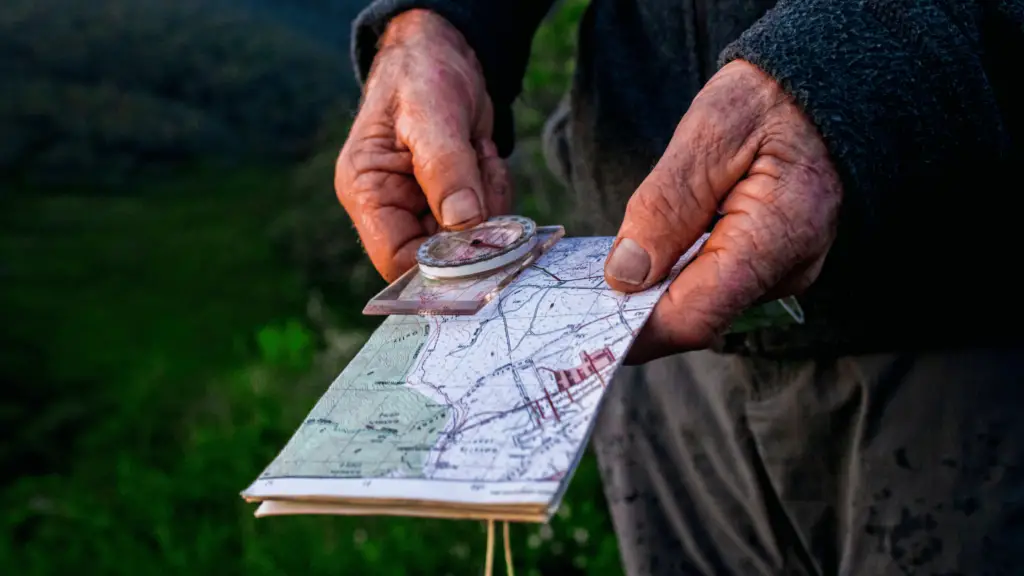
Safety and Environmental Considerations
When venturing into the woods or wilderness for orienteering, your safety is paramount. Being aware of the weather conditions is crucial; you should check the forecast and prepare accordingly with appropriate clothing and gear. Always carry a compass and a whistle for navigation and signaling for help in case of emergency. Knowledge of first aid is beneficial, and it’s essential to have a first aid kit on hand.
Remember to orienteer responsibly by respecting the natural environment. Leave No Trace principles are vital:
- Travel on durable surfaces
- Dispose of waste properly
- Leave what you find
- Minimize campfire impacts
- Respect wildlife
- Be considerate of other visitors
This approach ensures that you minimize your impact on the environment and preserve it for future orienteers. Taking care of your surroundings demonstrates respect for both the natural world and other hobbyists sharing the space with you.
For your own safety and the preservation of the environment:
| Do | Don’t |
|---|---|
| Inform someone of your location | Venture off known paths |
| Hydrate and bring sufficient water | Leave rubbish behind |
| Use a map and compass | Harm wildlife or plants |
By adhering to these guidelines, you ensure a safe and environmentally conscious orienteering experience.
Frequently Asked Questions
Orienteering combines adventure with navigation, offering a rewarding experience for the outdoors enthusiast. This section addresses some common queries to assist beginners in starting their orienteering journey.
What equipment do I need to start orienteering?
To begin orienteering, minimal gear is required. You will need a detailed orienteering map and a compass. Wear sturdy outdoor footwear, and clothing appropriate for the weather and the environment.
How can I find orienteering courses near my location?
Discover local courses by connecting with orienteering clubs or organizations in your area. The New England Orienteering Club, for example, offers resources that can help you find courses nearby.
What are the essential skills for beginner orienteers to learn?
Key skills include map reading, interpreting terrain features, and using a compass. Grasping these basics will enable you to navigate courses effectively and build confidence in the sport.
Are there any resources available for children interested in orienteering?
Yes, various organizations offer orienteering programs and materials tailored for children. These are designed to make learning navigation skills fun and engaging for young participants.
Can you explain the process of setting up a personal orienteering course?
Setting up a personal course involves selecting control points and marking them on a map. The level of difficulty can be adjusted based on your skill level, and the terrain you have access to.
What should I know before participating in my first orienteering competition?
Familiarize yourself with the event format, rules, and the compass and map symbols used in competitions. Start with beginner-friendly events and focus on finishing the course accurately before working on speed.

